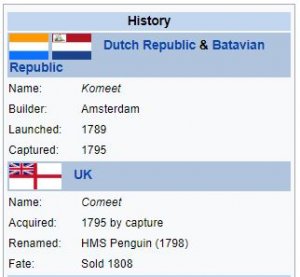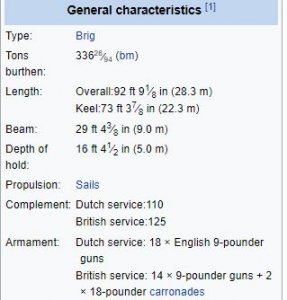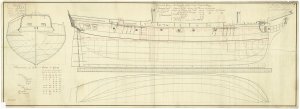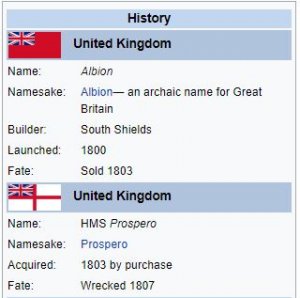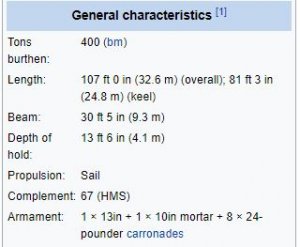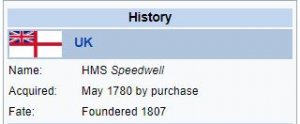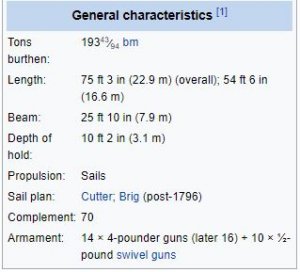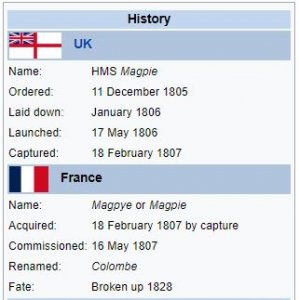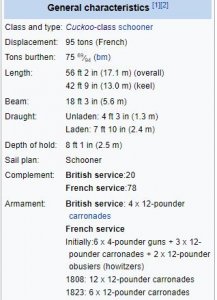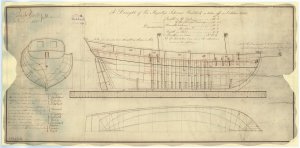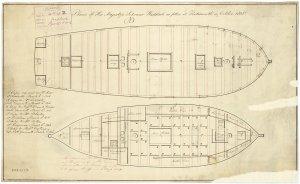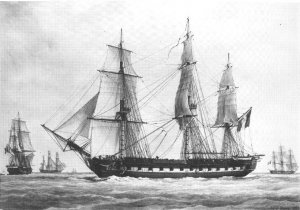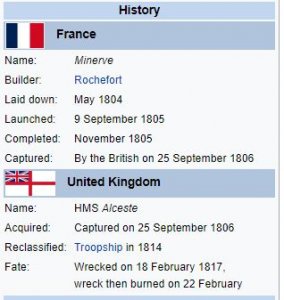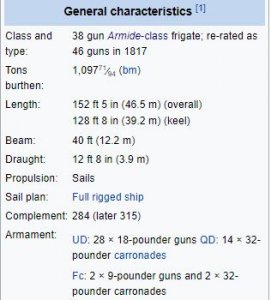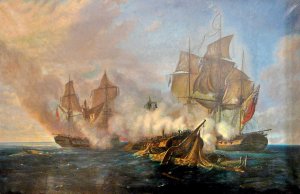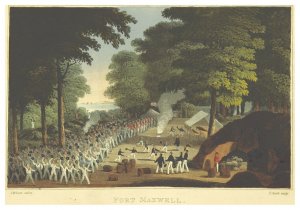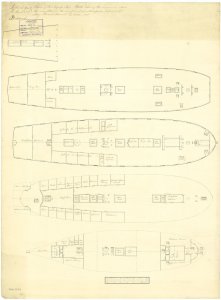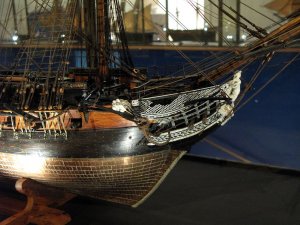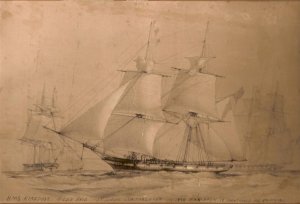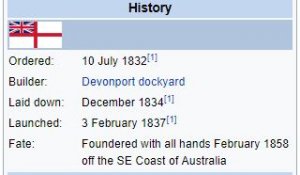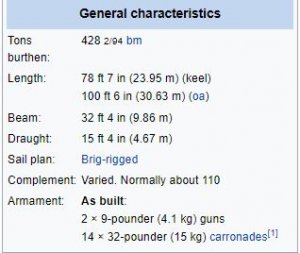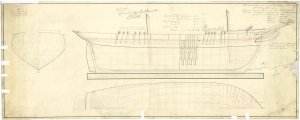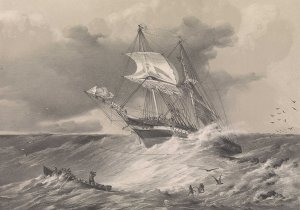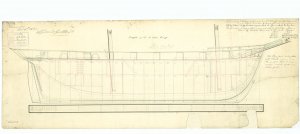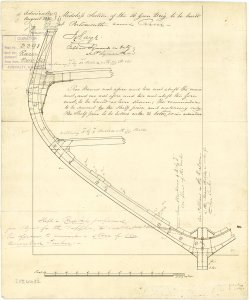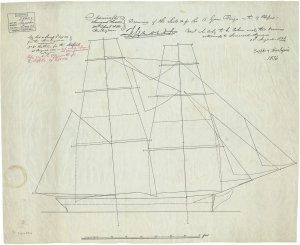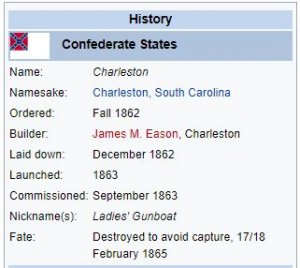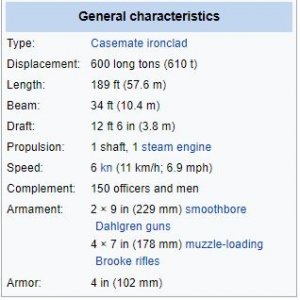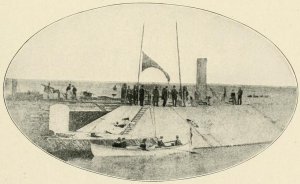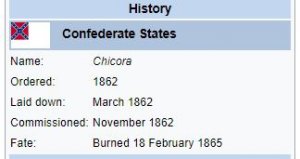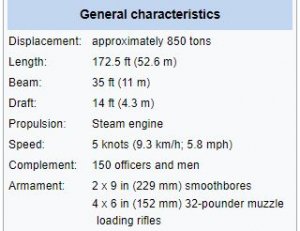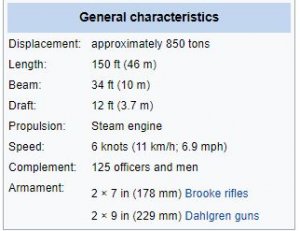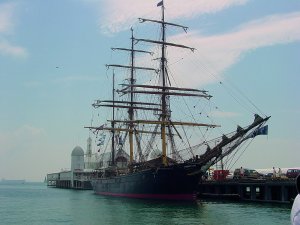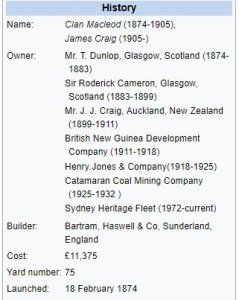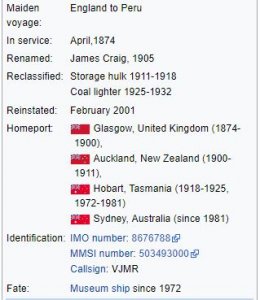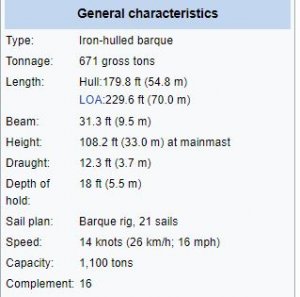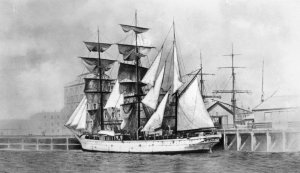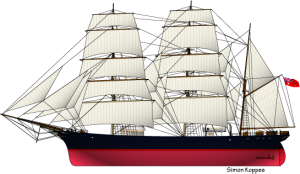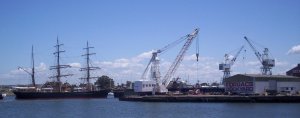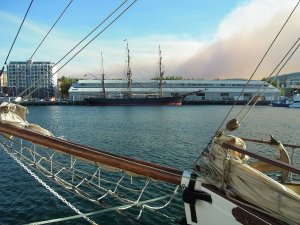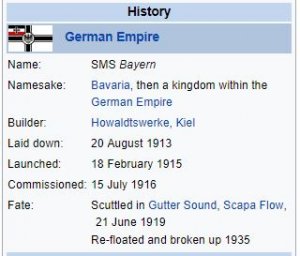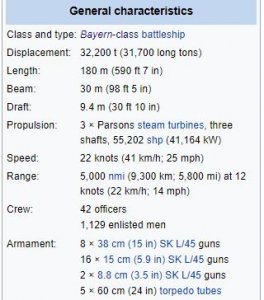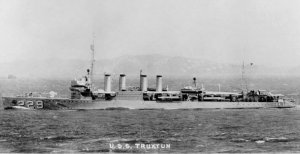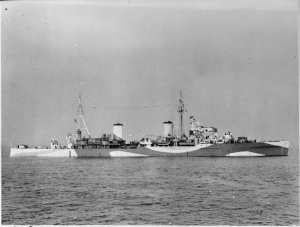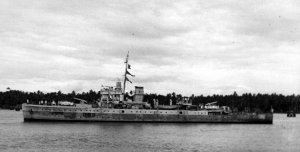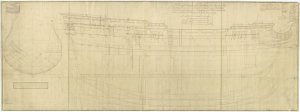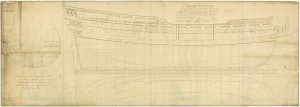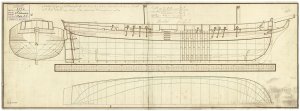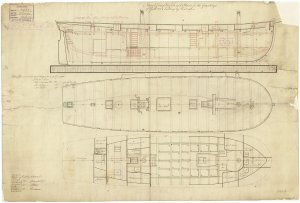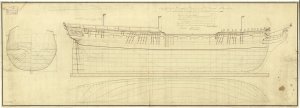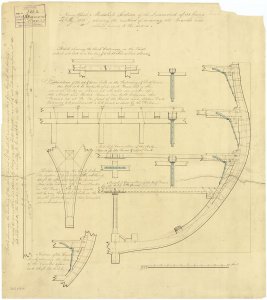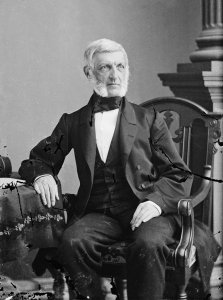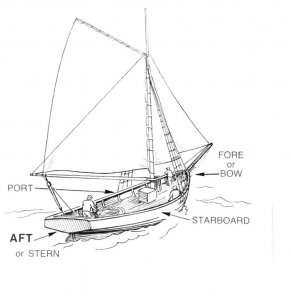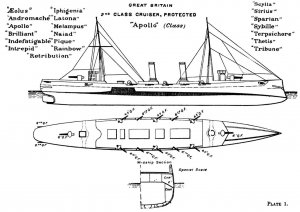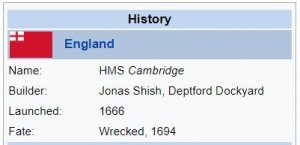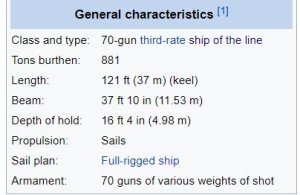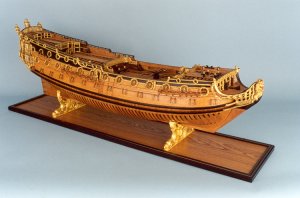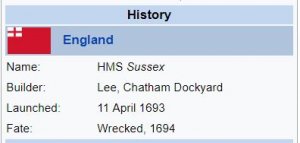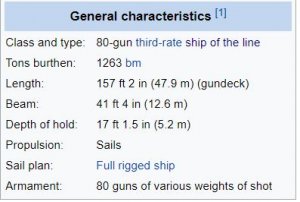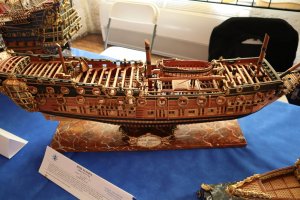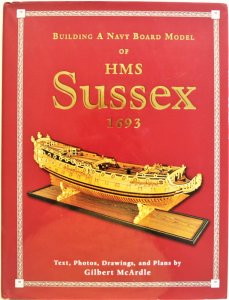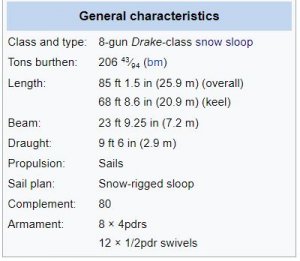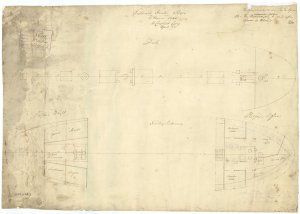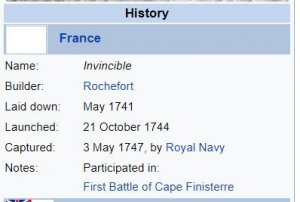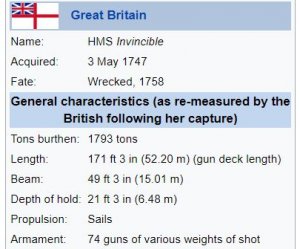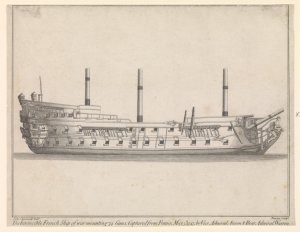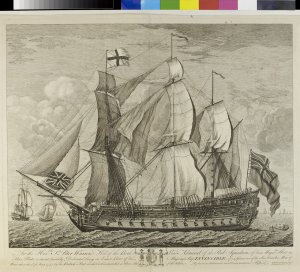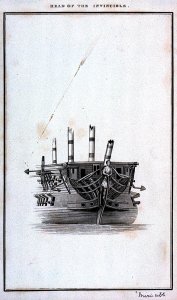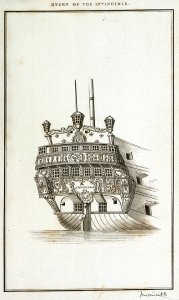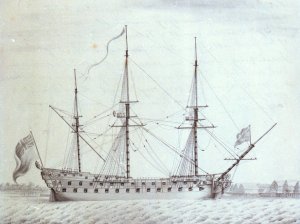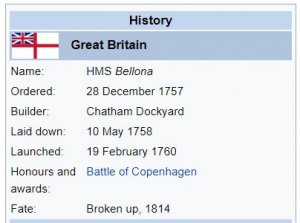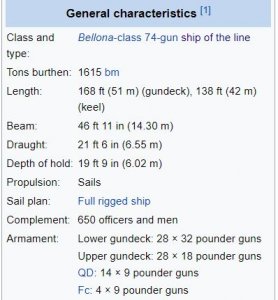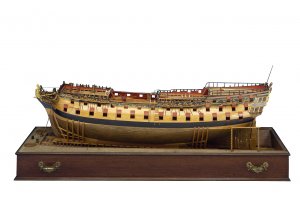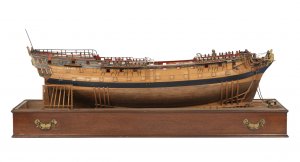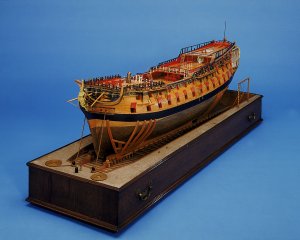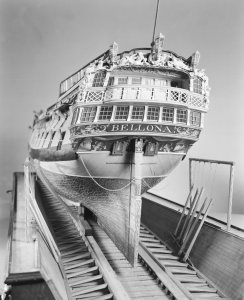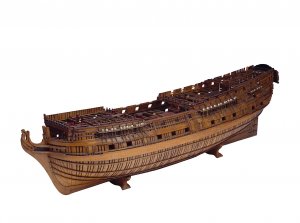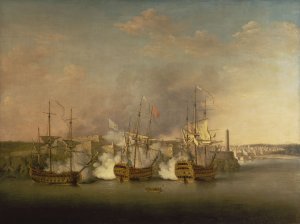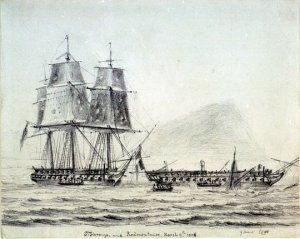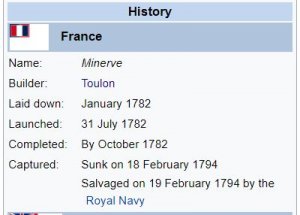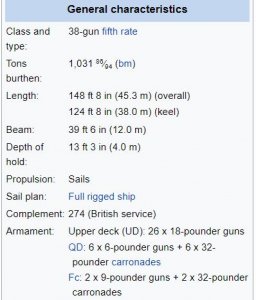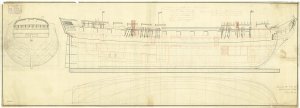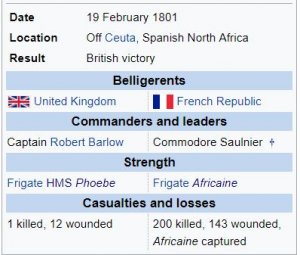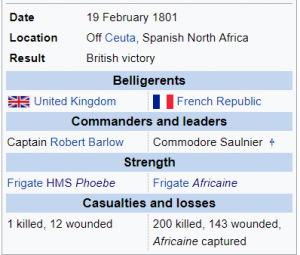Today in Naval History - Naval / Maritime Events in History
18 February 1800 - The Battle of the Malta Convoy
HMS Alexander (74), Lt. William Harrington (Acting), and HMS Success (32), Cptn. Shuldham Peard, captured Genereux (74) off Malta.
Généreux was a French Téméraire-class 74-gun ship of the line. After capture she completed her career as part of the Royal Navy as HMS Généreux.
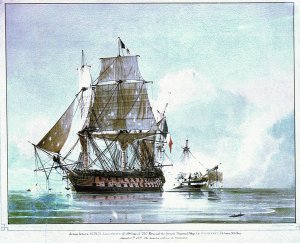
Coloured lithograph (PAF4706 is an uncoloured impression). Le Genereux and HMS Leander are depicted after the action. Le Genereux, in port side view, is flying the French flag at the main mast and stern, gun ports are open, all sails are holed. The starboard bow of HMS Leander is visible on the right-hand side of the image. She appears to have lost her masts, tattered sails are draped on the decks and hang from the bowspit. Flotsam is visible in the calm sea. While carrying Nelson's despatches announcing the victory in the Battle of the Nile, HMS Leander was captured by the French Le Genereux on 18th August 1798. The crew displayed exceptionally brave resistence. The commander, Captain Thomas Boulden Thompson, and Nelson's flag commander, Edward Berry, who was on board, were afterwards knighted. Le Genereux was eventually captured and added to the Royal Navy in 1800.
History
She was launched in 1785 at Rochefort. Under Louis-Jean-Nicolas Lejoille, she was one of only two ships to escape the British attack at the Battle of the Nile in August 1798, along with Guillaume Tell.
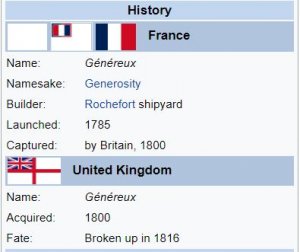
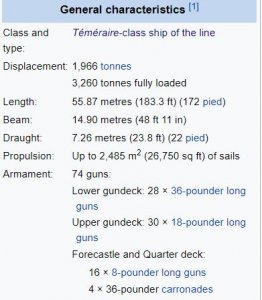
Shortly after the battle of the Nile, on 18 August 1798, she fell in with a smaller British ship of the line, HMS Leander of 50 guns. After a long battle, the Généreux captured the Leander, with the Leander suffering 35 killed and 57 wounded and the Généreux suffered around 100 killed and 180 wounded.
In March 1799, Généreux escorted a convoy to Corfu. En route, her captain, Lejoille, decided to bombard Brindisi. He was killed in the ensuing exchange of fire, and lieutenant Claude Touffet took over. The city fell on 3 March after a two-hour battle.
On 6 February 1800, Généreux, under Captain Renaudin, departed from Toulon leading a squadron comprising the frigate Badine, the corvettes Sans Pareille and Fauvette, and the fluyt Ville de Marseille, under Rear-Admiral Jean-Baptiste Perrée. In the morning of 18 February, an English fleet chased the French squadron off Lampedusa island. In the ensuing Battle of the Malta Convoy, Perrée was killed, and Généreux covered the squadron, allowing Badine, Sans Pareille and Fauvette to escape, before striking her colours. Her battle ensign, a 16 m by 8.3 m tricolour, was given to the city of Norwich by Berry and Nelson. The flag has been preserved; its size and completeness marking it as a special artifact of the period.
She became HMS Généreux and she was in Minorca in 1801 when she press-ganged a crew from the Walmesley. She engaged Spanish ships and she was intended to go to Egypt. Storm damage prevented this so she patrolled off what is now Libya. After taking part in an unsuccessful attack on the French island of Elba, she set sail from Minorca for Spithead after peace was declared. She arrived at Spithead on 27 July 1802. She was finally broken up in 1816.
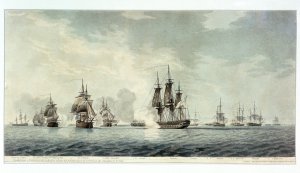
Battle of the Nile (PAF4700)
HMS Alexander was a 74-gun third-rate of the Royal Navy. She was launched at Deptford Dockyard on 8 October 1778. During her career she was captured by the French, and later recaptured by the British. She fought at the Nile in 1798, and was broken up in 1819. She was named after Alexander the Great.
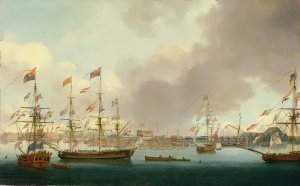
Launch of HMS Alexander at Deptford in 1778 (BHC1875), by John Cleveley the Younger (NMM) - HMS Alexander is the ship still on the slipway, centre background
HMS Foudroyant was an 80-gun third rate of the Royal Navy, one of only two British-built 80-gun ships of the period (the other was HMS Caesar. Foudroyant was built in the dockyard at Plymouth Dock (a.k.a. Devonport) and launched on 31 March 1798.[Note 2] Foudroyant served Nelson as his flagship from 6 June 1799 until the end of June 1801.
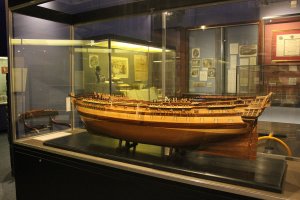
A model of Foudroyant in Monmouth Museum
Foudroyant had a long and successful career, and although she was not involved in any major fleet action, she did provide invaluable service to numerous admirals throughout her 17 years on active service. In her last years she became a training vessel for boys.
HMS Northumberland was a 74-gun third rate ship of the line of the Royal Navy, built at the yards of Barnard, Deptford and launched on 2 February 1798.
HMS Success was a 32-gun Amazon-class fifth-rate frigate of the British Royal Navy launched in 1781, which served during the American Revolutionary, French Revolutionary and Napoleonic Wars. The French captured her in the Mediterranean on 13 February 1801, but she was recaptured by the British on 2 September. She continued to serve in the Mediterranean until 1811, and in North America until hulked in 1814, then serving as a prison ship and powder hulk, before being broken up in 1820.
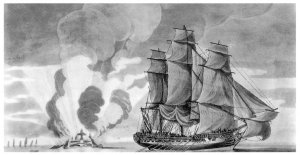
Success destroys the Santa Catalina, 16 March 1782
https://en.wikipedia.org/wiki/French_ship_Généreux_(1785)
https://en.wikipedia.org/wiki/HMS_Alexander_(1778)
https://en.wikipedia.org/wiki/HMS_Foudroyant_(1798)
https://en.wikipedia.org/wiki/HMS_Northumberland_(1798)
https://en.wikipedia.org/wiki/HMS_Success_(1781)
18 February 1800 - The Battle of the Malta Convoy
HMS Alexander (74), Lt. William Harrington (Acting), and HMS Success (32), Cptn. Shuldham Peard, captured Genereux (74) off Malta.
Généreux was a French Téméraire-class 74-gun ship of the line. After capture she completed her career as part of the Royal Navy as HMS Généreux.

Coloured lithograph (PAF4706 is an uncoloured impression). Le Genereux and HMS Leander are depicted after the action. Le Genereux, in port side view, is flying the French flag at the main mast and stern, gun ports are open, all sails are holed. The starboard bow of HMS Leander is visible on the right-hand side of the image. She appears to have lost her masts, tattered sails are draped on the decks and hang from the bowspit. Flotsam is visible in the calm sea. While carrying Nelson's despatches announcing the victory in the Battle of the Nile, HMS Leander was captured by the French Le Genereux on 18th August 1798. The crew displayed exceptionally brave resistence. The commander, Captain Thomas Boulden Thompson, and Nelson's flag commander, Edward Berry, who was on board, were afterwards knighted. Le Genereux was eventually captured and added to the Royal Navy in 1800.
History
She was launched in 1785 at Rochefort. Under Louis-Jean-Nicolas Lejoille, she was one of only two ships to escape the British attack at the Battle of the Nile in August 1798, along with Guillaume Tell.


Shortly after the battle of the Nile, on 18 August 1798, she fell in with a smaller British ship of the line, HMS Leander of 50 guns. After a long battle, the Généreux captured the Leander, with the Leander suffering 35 killed and 57 wounded and the Généreux suffered around 100 killed and 180 wounded.
In March 1799, Généreux escorted a convoy to Corfu. En route, her captain, Lejoille, decided to bombard Brindisi. He was killed in the ensuing exchange of fire, and lieutenant Claude Touffet took over. The city fell on 3 March after a two-hour battle.
On 6 February 1800, Généreux, under Captain Renaudin, departed from Toulon leading a squadron comprising the frigate Badine, the corvettes Sans Pareille and Fauvette, and the fluyt Ville de Marseille, under Rear-Admiral Jean-Baptiste Perrée. In the morning of 18 February, an English fleet chased the French squadron off Lampedusa island. In the ensuing Battle of the Malta Convoy, Perrée was killed, and Généreux covered the squadron, allowing Badine, Sans Pareille and Fauvette to escape, before striking her colours. Her battle ensign, a 16 m by 8.3 m tricolour, was given to the city of Norwich by Berry and Nelson. The flag has been preserved; its size and completeness marking it as a special artifact of the period.
She became HMS Généreux and she was in Minorca in 1801 when she press-ganged a crew from the Walmesley. She engaged Spanish ships and she was intended to go to Egypt. Storm damage prevented this so she patrolled off what is now Libya. After taking part in an unsuccessful attack on the French island of Elba, she set sail from Minorca for Spithead after peace was declared. She arrived at Spithead on 27 July 1802. She was finally broken up in 1816.

Battle of the Nile (PAF4700)
HMS Alexander was a 74-gun third-rate of the Royal Navy. She was launched at Deptford Dockyard on 8 October 1778. During her career she was captured by the French, and later recaptured by the British. She fought at the Nile in 1798, and was broken up in 1819. She was named after Alexander the Great.

Launch of HMS Alexander at Deptford in 1778 (BHC1875), by John Cleveley the Younger (NMM) - HMS Alexander is the ship still on the slipway, centre background
HMS Foudroyant was an 80-gun third rate of the Royal Navy, one of only two British-built 80-gun ships of the period (the other was HMS Caesar. Foudroyant was built in the dockyard at Plymouth Dock (a.k.a. Devonport) and launched on 31 March 1798.[Note 2] Foudroyant served Nelson as his flagship from 6 June 1799 until the end of June 1801.

A model of Foudroyant in Monmouth Museum
Foudroyant had a long and successful career, and although she was not involved in any major fleet action, she did provide invaluable service to numerous admirals throughout her 17 years on active service. In her last years she became a training vessel for boys.
HMS Northumberland was a 74-gun third rate ship of the line of the Royal Navy, built at the yards of Barnard, Deptford and launched on 2 February 1798.
HMS Success was a 32-gun Amazon-class fifth-rate frigate of the British Royal Navy launched in 1781, which served during the American Revolutionary, French Revolutionary and Napoleonic Wars. The French captured her in the Mediterranean on 13 February 1801, but she was recaptured by the British on 2 September. She continued to serve in the Mediterranean until 1811, and in North America until hulked in 1814, then serving as a prison ship and powder hulk, before being broken up in 1820.

Success destroys the Santa Catalina, 16 March 1782
https://en.wikipedia.org/wiki/French_ship_Généreux_(1785)
https://en.wikipedia.org/wiki/HMS_Alexander_(1778)
https://en.wikipedia.org/wiki/HMS_Foudroyant_(1798)
https://en.wikipedia.org/wiki/HMS_Northumberland_(1798)
https://en.wikipedia.org/wiki/HMS_Success_(1781)



